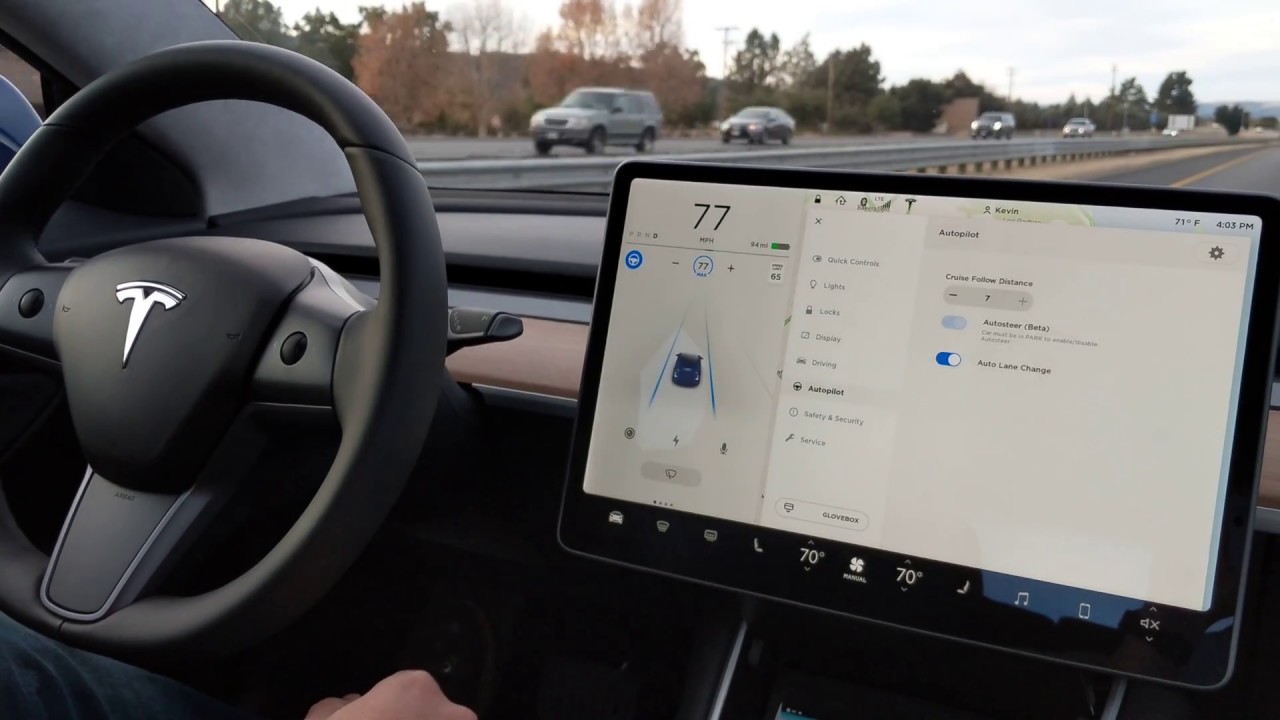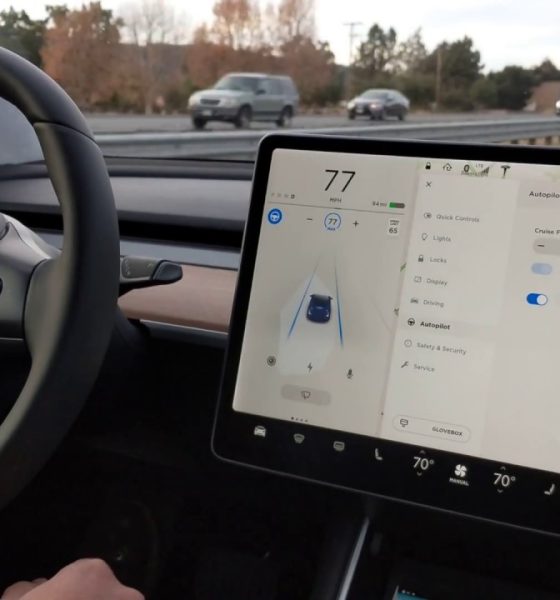

News
Tesla’s ‘Early Access Program’ will reportedly be extended to Full Self-Driving buyers
It appears that Tesla’s Early Access Program will be automatically extended to buyers who purchased Full Self-Driving (FSD) prior to the end of February 2019, at least according to an email from the all-electric car maker to a Model 3 owner shared via Twitter.
Early purchase of FSD had previously been understood as a qualifier for the Early Access Program, but confusion over access to the program has been widespread thanks to seemingly sporadic rollouts of beta features combined with very little communication from Tesla. A March 1, 2019 announcement posted by Tesla previously confirmed this arrangement; however, that post has since been removed from Tesla’s official news/blog page.
It read as follows:“Customers who previously purchased Full Self-Driving will receive an invitation to Tesla’s Early Access Program (EAP). EAP members are invited to experience and provide feedback on new features and functionality before they are rolled out to other customers.”A Tesla owner and enthusiast well known in the community under the handle Earl of Frunkpuppy (@28delayslater/Twitter) recently received an email from Tesla which appears to clarify the matter:
“In regards to the Early Access program, we are super excited to offer the Early Access Program to our customers who had purchased FSD prior to the end of February! At this time, we are currently working on the process and timeline for this exciting feature. Once we have the appropriate information, we will communicate to our customer base! Invitations will be sent out automatically to all qualifying owners. The good news is that there are no extra steps needed on your part to receive the invitation. Thank you again for your email.”
Tesla’s Early Access Program provides beta software features for testing by an exclusive pool of owners. Invitations to join the program have been received and accepted by many in the owner community, but details are sparse on how the program is carried out. Given the secrecy mandated by Tesla for its Early Access users, this is not surprising.
What’s known generally about the program, as shared online by a few owners actively involved, is that participants receive an email prior to a beta release requiring acceptance of the software before being the update is sent over the air. At that time, the owner is also reminded of the Early Access Program’s strict rules for participation: No sharing information online and no 3rd party software reporting apps (TeslaFi, notably). Whether or not invitees are even supposed to acknowledge receiving an invite is even debated, with references being made to the first rule of “Fight Club”.
One additional thing worth noting about Tesla’s Early Access Program is that it’s not a priority system, meaning enrollment isn’t tied to receiving mass software updates before other non-participants. The program is strictly for software testing, and some features included in beta releases may never be released in the final system-wide update. The role of the participant is to provide helpful feedback to Tesla so that improvements can be made, not simply to be first in line for new features, although that is a huge benefit to weigh with the risks of using imperfect software that controls your vehicle. As the all-electric car maker moves closer towards launching its Full Self-Driving program, feedback from participants of the Early Access Program will become more essential.
Tesla has begun rolling out the final FSD computer (Hardware 3/HW3) in new production vehicles, and CEO Elon Musk recently confirmed that the company’s mobile service teams would be able to install the upgrade instead of the company’s service centers. Musk detailed the performance difference between HW2.5 and HW3 via Twitter: “The Tesla Full Self-Driving Computer now in production is at about 5% compute load for these [Navigate on Autopilot] tasks or 10% with full fail-over redundancy,” he wrote, later mentioning that the HW2.5 load was 80% with the system’s current features.
The company will be hosting an Autonomy Investor Day on April 22nd where the roadmap for Tesla’s Full Self-Driving features will be discussed and key updates will be provided. Investors will also be given test rides demonstrating FSD and Autopilot improvements, including never-before-seen features. The event will be webcast, though additional details are yet to be announced.

Elon Musk
Elon Musk’s X will start using a Tesla-like software update strategy
The initiative seems designed to accelerate updates to the social media platform, while maintaining maximum transparency.

Elon Musk’s social media platform X will adopt a Tesla-esque approach to software updates for its algorithm.
The initiative seems designed to accelerate updates to the social media platform, while maintaining maximum transparency.
X’s updates to its updates
As per Musk in a post on X, the social media company will be making a new algorithm to determine what organic and advertising posts are recommended to users. These updates would then be repeated every four weeks.
“We will make the new 𝕏 algorithm, including all code used to determine what organic and advertising posts are recommended to users, open source in 7 days. This will be repeated every 4 weeks, with comprehensive developer notes, to help you understand what changed,” Musk wrote in his post.
The initiative somewhat mirrors Tesla’s over-the-air update model, where vehicle software is regularly refined and pushed to users with detailed release notes. This should allow users to better understand the details of X’s every update and foster a healthy feedback loop for the social media platform.
xAI and X
X, formerly Twitter, has been acquired by Elon Musk’s artificial intelligence startup, xAI last year. Since then, xAI has seen a rapid rise in valuation. Following the company’s the company’s upsized $20 billion Series E funding round, estimates now suggest that xAI is worth tens about $230 to $235 billion. That’s several times larger than Tesla when Elon Musk received his controversial 2018 CEO Performance Award.
As per xAI, the Series E funding round attracted a diverse group of investors, including Valor Equity Partners, Stepstone Group, Fidelity Management & Research Company, Qatar Investment Authority, MGX, and Baron Capital Group, among others. Strategic partners NVIDIA and Cisco Investments also continued support for building the world’s largest GPU clusters.
News
Tesla FSD Supervised wins MotorTrend’s Best Driver Assistance Award
The decision marks a notable reversal for the publication from prior years, with judges citing major real-world improvements that pushed Tesla’s latest FSD software ahead of every competing ADAS system.

Tesla’s Full Self-Driving (Supervised) system has been named the best driver-assistance technology on the market, earning top honors at the 2026 MotorTrend Best Tech Awards.
The decision marks a notable reversal for the publication from prior years, with judges citing major real-world improvements that pushed Tesla’s latest FSD software ahead of every competing ADAS system. And it wasn’t even close.
MotorTrend reverses course
MotorTrend awarded Tesla FSD (Supervised) its 2026 Best Tech Driver Assistance title after extensive testing of the latest v14 software. The publication acknowledged that it had previously criticized earlier versions of FSD for erratic behavior and near-miss incidents, ultimately favoring rivals such as GM’s Super Cruise in earlier evaluations.
According to MotorTrend, the newest iteration of FSD resolved many of those shortcomings. Testers said v14 showed far smoother behavior in complex urban scenarios, including unprotected left turns, traffic circles, emergency vehicles, and dense city streets. While the system still requires constant driver supervision, judges concluded that no other advanced driver-assistance system currently matches its breadth of capability.
Unlike rival systems that rely on combinations of cameras, radar, lidar, and mapped highways, Tesla’s FSD operates using a camera-only approach and is capable of driving on city streets, rural roads, and freeways. MotorTrend stated that pure utility, the ability to handle nearly all road types, ultimately separated FSD from competitors like Ford BlueCruise, GM Super Cruise, and BMW’s Highway Assistant.
High cost and high capability
MotorTrend also addressed FSD’s pricing, which remains significantly higher than rival systems. Tesla currently charges $8,000 for a one-time purchase or $99 per month for a subscription, compared with far lower upfront and subscription costs from other automakers. The publication noted that the premium is justified given FSD’s unmatched scope and continuous software evolution.
Safety remained a central focus of the evaluation. While testers reported collision-free operation over thousands of miles, they noted ongoing concerns around FSD’s configurable driving modes, including options that allow aggressive driving and speeds beyond posted limits. MotorTrend emphasized that, like all Level 2 systems, FSD still depends on a fully attentive human driver at all times.
Despite those caveats, the publication concluded that Tesla’s rapid software progress fundamentally reshaped the competitive landscape. For drivers seeking the most capable hands-on driver-assistance system available today, MotorTrend concluded Tesla FSD (Supervised) now stands alone at the top.
News
Elon Musk’s Grokipedia surges to 5.6M articles, almost 79% of English Wikipedia
The explosive growth marks a major milestone for the AI-powered online encyclopedia, which was launched by Elon Musk’s xAI just months ago.

Elon Musk’s Grokipedia has grown to an impressive 5,615,201 articles as of today, closing in on 79% of the English Wikipedia’s current total of 7,119,376 articles.
The explosive growth marks a major milestone for the AI-powered online encyclopedia, which was launched by Elon Musk’s xAI just months ago. Needless to say, it would only be a matter of time before Grokipedia exceeds English Wikipedia in sheer volume.
Grokipedia’s rapid growth
xAI’s vision for Grokipedia emphasizes neutrality, while Grok’s reasoning capabilities allow for fast drafting and fact-checking. When Elon Musk announced the initiative in late September 2025, he noted that Grokipedia would be an improvement to Wikipedia because it would be designed to avoid bias.
At the time, Musk noted that Grokipedia “is a necessary step towards the xAI goal of understanding the Universe.”
Grokipedia was launched in late October, and while xAI was careful to list it only as Version 0.1 at the time, the online encyclopedia immediately earned praise. Wikipedia co-founder Larry Sanger highlighted the project’s innovative approach, noting how it leverages AI to fill knowledge gaps and enable rapid updates. Netizens also observed how Grokipedia tends to present articles in a more objective manner compared to Wikipedia, which is edited by humans.
Elon Musk’s ambitious plans
With 5,615,201 total articles, Grokipedia has now grown to almost 79% of English Wikipedia’s article base. This is incredibly quick, though Grokipedia remains text-only for now. xAI, for its part, has now updated the online encyclopedia’s iteration to v0.2.
Elon Musk has shared bold ideas for Grokipedia, including sending a record of the entire knowledge base to space as part of xAI’s mission to preserve and expand human understanding. At some point, Musk stated that Grokipedia will be renamed to Encyclopedia Galactica, and it will be sent to the cosmos.
“When Grokipedia is good enough (long way to go), we will change the name to Encyclopedia Galactica. It will be an open source distillation of all knowledge, including audio, images and video. Join xAI to help build the sci-fi version of the Library of Alexandria!” Musk wrote, adding in a later post that “Copies will be etched in stone and sent to the Moon, Mars and beyond. This time, it will not be lost.”








